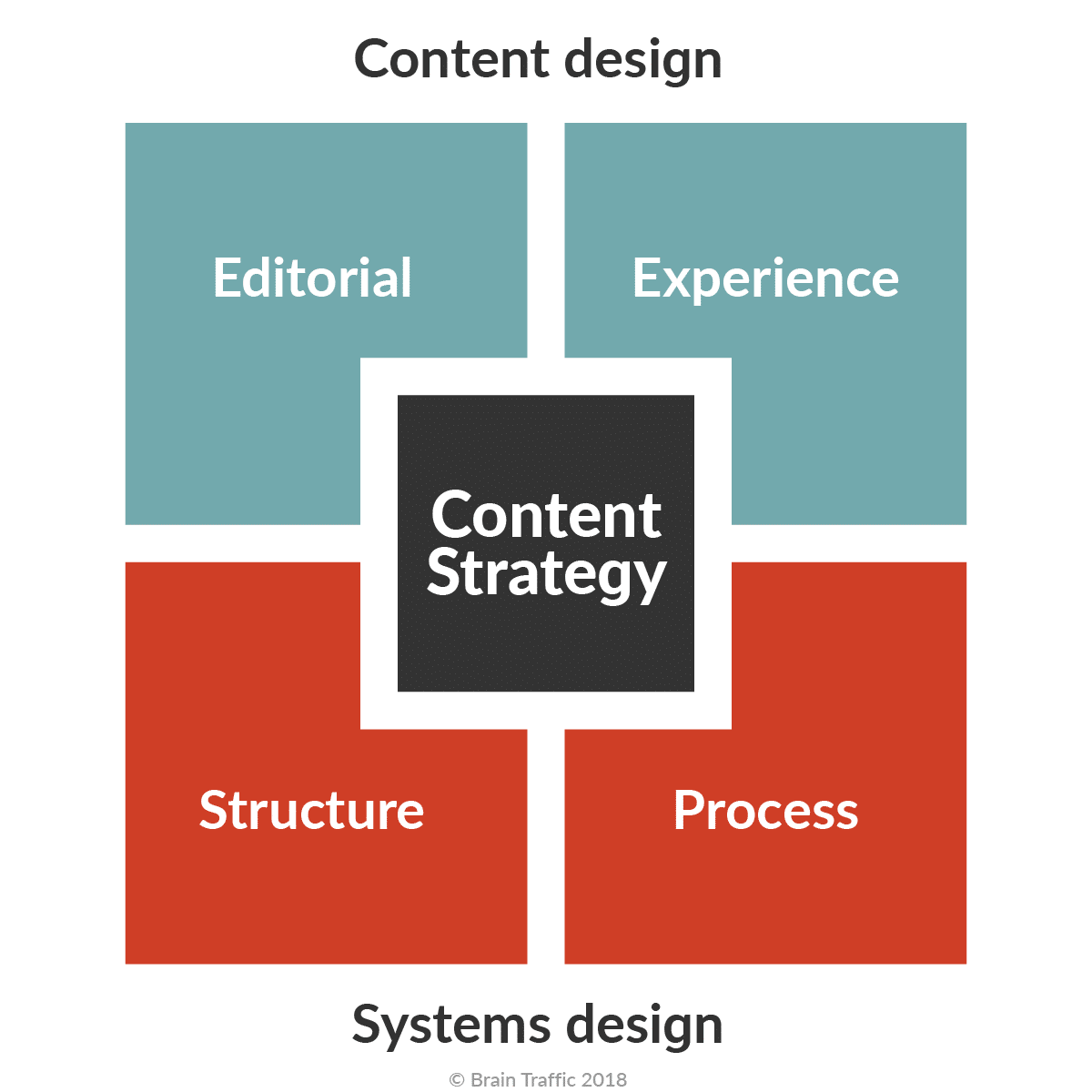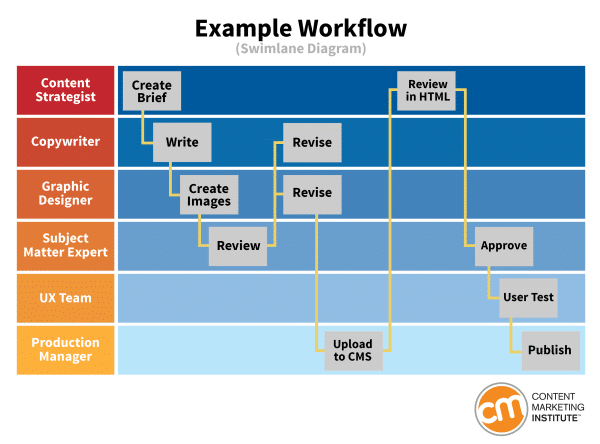You’ve probably heard how successful content marketing can be when you do it consistently.
Consistent content earns 55% more visitors coming to your site and 67% more leads. (Overall, creating content is your best bet for increasing traffic – ranking in organic search brings in 1,000% more traffic than organic social media.)
But you can’t produce one blog post per month or blog randomly at a whim and expect to move that needle.
Achieving consistency – producing great content on a regular schedule – is hard to do unless you scale your content marketing operation.
Scaling means ramping up production while growing your resources and increasing your efforts to get it done.
Scaling the right way means you’ll have the ability to amp up your content output without sacrificing any part of what makes your content unique, engaging, and valuable.
So, what do you need to scale?
You need a strategy, systems, workflows, and a team in place if you expect to scale your content marketing successfully and earn more traffic.
How to scale your content marketing in 3 steps
Step 1: Build a content strategy
No, the first step on this list isn’t to hire more people for your content team.
Why?
Because if you hire more people, that’s all you’ll have – more people.
You won’t have a strategic way to guide those people to produce great content at scale.
It’s that simple: You can’t scale without a strategy in place. That’s because, at its most basic level, a content strategy is a plan of action that maps out how you’ll execute content marketing.
Without this action plan, you’ll be missing key building blocks that make scaling possible in the first place.
- Who are we creating content for?
- Why are we creating content for them?
- What do we hope to get out of content marketing?
- Who is in charge of our content? Who plans, who writes, who publishes, etc.?
- What tools do we invest in to make our jobs easier? What resources?
- What broad topic area is our focus? What content topics will we cover under that umbrella?
- How often will we post?
- What will we post about next week? In 2 weeks? Next month?
- How will we measure and track our progress?

Attempt to scale without setting a foundation, and you’ll risk breaking your content marketing entirely. That’s because increased output adds pressure to every piece of your operation – especially your team members and processes.
For instance, if you decide to double the number of blogs you publish each week but don’t plan how to do that beforehand, your production will become rushed and messy. Your content creators will burn out quickly. Little things will start falling through the cracks. Here are a few examples:
- You’re rushing to publish blogs each week, so you skip the final editing pass that would have caught small but detrimental mistakes like a missing link, a broken image, or misspelled words.
- Burned-out writers who feel trapped by impossible deadlines and a lack of guidance are more likely to copy and spin content – a huge issue that could destroy your reputation.
- Or, they might skip researching thoroughly and citing sources, so your content loses credibility.
- Since your standards slip, your brand voice falters and sounds off-key – a trust-breaker.
- Your team is too busy and rushed for much creativity (which needs time and space to simmer), so your content starts to sound samey and repetitive.
Blindly adding more team members won’t solve the root issue – a lack of strategy that directs and guides your content marketing, processes, team, and roles.
TL;DR: Your content will suffer if you scale without preparation and strategy. And sub-par content does not bring results.
Step 2: Put a content marketing team in place
Once the strategy is set, you can move on to solidifying your team or putting one together.
A strong team is essential to scaling content marketing because, without an effective team, the effort will inevitably fall apart. An effective team:
- Works toward a larger goal than just completing their individual tasks.
- Knows their roles, what success looks like within them, and how every other team role contributes to the whole.
- Can create content at scale without sacrificing quality.
A good, effective team is not just made up of talented individuals. Instead of plain talent, look for people with potential + the right mindset. This means:
- They have some skills, but more than that, they have the potential to build those skills to leverage them toward your business specifically.
- They're willing to learn and happy to grow with the brand/business.
If you already have people like this on your side, make sure their roles are clearly defined within your team. And keep in mind one person may wear multiple hats.
This is true in smaller teams more often than in large ones. Additionally, small teams without the budget to hire for specific roles may need freelancers to fill in gaps until they have the funds to grow their team permanently.
Here are the essential roles:
- Content manager: Every content team needs a leader who guides the ship's direction. This person oversees writers/creators, the content calendar, the brand voice and style guidelines, and ensures all content aligns with the brand's goals and carries out the strategy.
- SEO specialist/strategist: This person ensures the website and blog are SEO-ready. They strategize to ensure SEO goals are met on- and off-page with keyword research and proper optimization.
- Content writer/creator: This role can be multi-faceted (or involve multiple people) if the brand creates more than written content. Writers write, designers create visual content and infographics, videographers create videos, etc.
- Social media/promotions manager: Who distributes content on various promotional channels after publication? Who's in charge of social posts, emails, or even ads? This person.
Step 3: Set up content marketing workflows
Scaling is a lot easier when you have documented processes for each piece of the content marketing picture. For instance:
- Your main content writer leaves the team. Your content manager must moonlight as a writer until you can find a replacement. They follow the content writer's workflow to produce consistent content without missing a beat.
- You hire a new writer to help scale your content marketing. You give them the workflows and SOPs (standard operating procedures) your established writer uses to create content, streamlining the onboarding process.
What do workflows look like?
To create a writer workflow, you might ask these questions:
- How should your writer(s) go about writing content?
- What are the standard procedures they should follow as they research and write?
- What style should they use?
- What grammar rules?
- What resources?
- What tools?
- Should they follow a general outline for each post?
In short, a workflow is a series of smaller tasks and guidelines anyone can follow to carry out a larger task, like writing a blog post, promoting blog content, or researching keywords and content topics.
Workflows are helpful because they help your team members' output stay consistent across tasks. For example, with one workflow that all your writers use, your blog posts will look, feel, and sound more consistent – like one person wrote them in the brand's voice versus two or three different people.
Workflows are meant to be repeated and reused no matter who fills a specific role. That means, even if your team makeup changes, it will still run like clockwork because you put SOPs in place.
Best of all, you can get creative with workflows. You can create one for each content marketing task, like ideating content, researching keywords, or writing blogs, or you can create a large, overarching workflow for each role on your team.
Workflows can also apply to much broader tasks – like your content marketing as a whole. For instance, an overarching team workflow can help your team members understand exactly how they fit into the large process of producing and publishing content consistently.

Here are some examples of workflows attached to content marketing processes.
Ideating
Document how someone ideating content topics should go about the process.
- What tools should they rely on?
- What research should they carry out? (Social listening? Keyword research? A mixture of qualitative and quantitative methods?)
- How should they record the topics they find and share them with the team?
Writing/researching
Create a detailed writer workflow showing them exactly how they should write your brand's blogs.
- Give them a general skeleton outline to follow with rules for formatting that can be reused for every blog.
- Provide overarching grammar and style guidelines.
- Stipulate which resources are good to cite and which are off-limits.
- Detail where/how they'll receive assignments, who they report to, and who they submit completed assignments to (or where they should be uploaded).
Editing
Guide your content editor, so they know exactly how to effectively do their job.
- What should the content editor look for while editing? Just spelling/grammar/punctuation, or should they review links, check sources, and edit for flow and style?
- Should they rewrite when they find large issues or send it back to the writer?
- What style guides should they follow?
- Should they use Word's "track changes" feature or edit without marking up the doc?
Scheduling/Publishing
Decide which tool you'll use for content planning (like a content calendar), and document how often content should get published, the best times for publishing, and the strategy for published blogs that coincide with events, holidays, sales, or seasons.
Scale smartly to grow your content marketing without breaking
To scale your content marketing successfully, you must scale smartly.
Think of strategy as the foundation of your content marketing. The strategy provides support and structure to effectively add to it and scale content as the brand grows.
An effective team with defined roles and workflows adds another layer of support and stability to your scaling efforts. It's much easier to hire more people when they can slot into the roles you've established versus hiring and figuring it out as you go.
Plus, when your team understands their place within the business and knows exactly what's expected of them, how to execute, and what success looks like, they're better able to follow through, stay productive, and work together.
Bottom line: Don't attempt to scale without first reinforcing your content marketing efforts. Without that support, your operations will be unstable – they'll fail and crumble.
The post How to successfully scale your content marketing and grow traffic appeared first on Search Engine Land.
from Search Engine Land https://ift.tt/7ZsF0J9
via
No comments:
Post a Comment